Every city has its own unique architectural look, in which unique buildings play the role of its luminous complement. In taking on such extraordinary and ambitious projects, designers deliberately complicate the task for themselves and their clients, defying the laws of physics and computation to create engineering solutions for the future. Futuristic buildings in their own right excite and amaze the imagination of citizens and tourists, and add variety to the landscape of urban agglomerations. This blog provides an overview of a number of original and unique residential buildings around the world.
One at Palm Jumeirah, Dubai
The One at Palm residential complex is located on the famous 'palm' island of Jumeirah, considered a modern wonder of the world in the waters of the Persian Gulf. Here, in an atmosphere of exoticism and luxury, are fashionable private villas, multi-star hotels, exclusive restaurants and shops. The complex is an example of effective cooperation between international companies: the authors of the project are the American architectural firm Soma together with RMJM from Dubai. The landscape design was developed by Vladimir Djurovich of Lebanon. The result of this collaboration is a 25-storey building with 94 apartments, two conventional and one unique penthouse, with its own lifts, swimming pool, library and games room.
The complex is divided into three sectors so that each floor has access to a maximum of two apartments. Each is individually designed, fully furnished and opens onto a spacious terrace with stunning sea views. The kitchens are equipped with top of the range appliances and the bathrooms are finished in natural stone and fitted with sanitary ware from the world's leading manufacturers. Residents have access to a restaurant and barbecue area, a swimming pool and cinema, a cigar lounge and a gymnasium. There is also a spa and a yacht club with private moorings and parking for supercars. The complex welcomes guests with lush greenery and a water salute. On completion, One at Palm, with all the amenities for comfortable and luxurious living, broke the record for property value in the Arab world.
One at Palm Jumeirah, Dorchester Collection, Dubai on the map
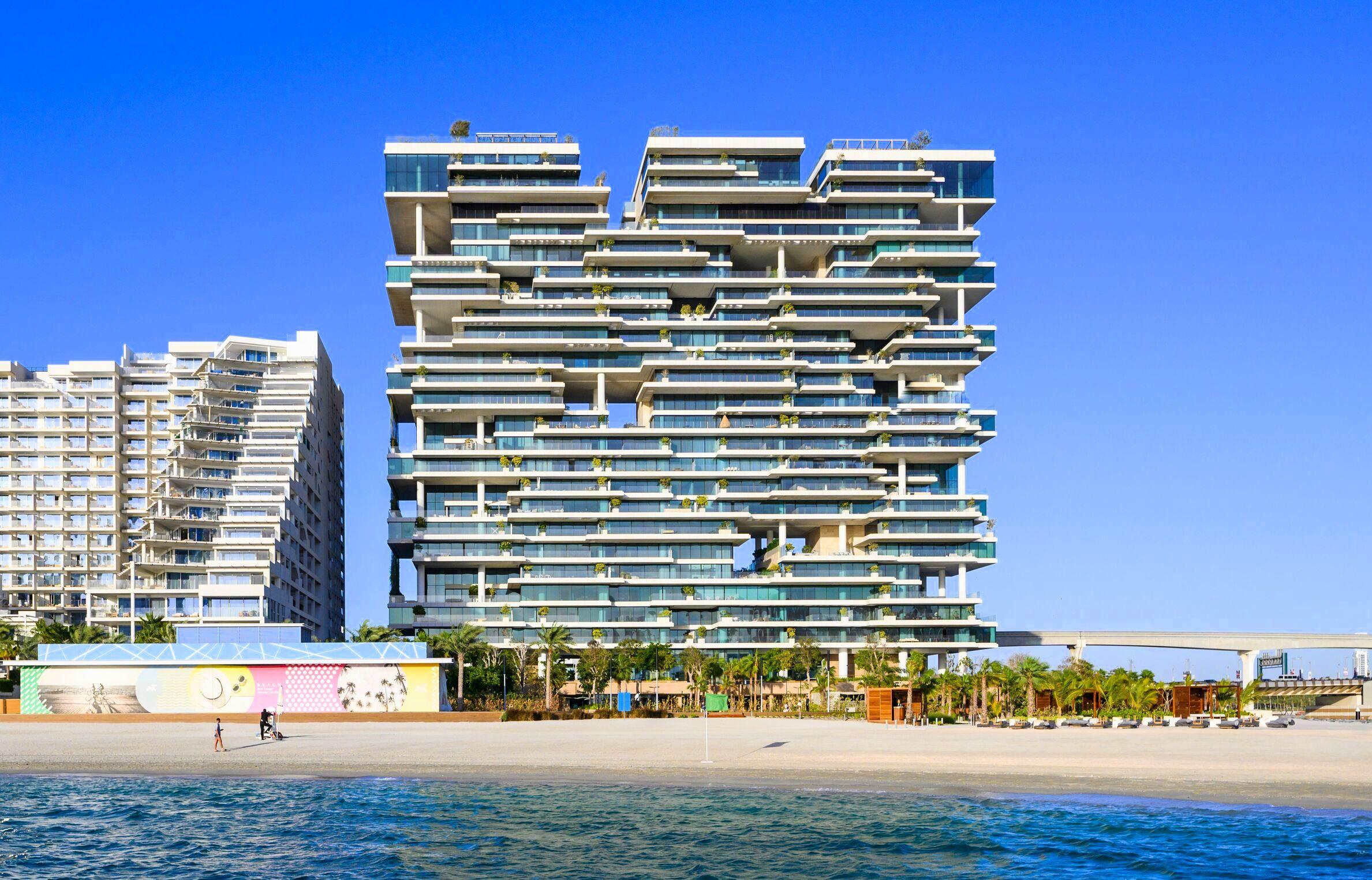
The Wave, Vejle, Denmark
The Wave is an iconic residential development built in 2011 on the shores of Vejle Fjord. It was designed by renowned Danish architect Jorn Utzon, who was inspired by the famous Sydney Opera House. The construction of the five buildings, which resemble rough sea waves, was carried out in several stages, with an interruption caused by the global financial crisis in 2008. Each part of the complex is 9 storeys high, with two-storey penthouses at the top. Waves" are formed by terracotta panels that form the roofs. The total area of the building is 14 thousand m2, which accommodates 110 comfortable apartments.
Inside, the spaces are designed to take advantage of the views of the fjord, with wooden floors extending to the balconies. The project also includes a promenade with stairs leading down to the sea, with interiors designed in an ascetic Scandinavian style. The Wave is considered the main attraction of the small town of Vejle and blends in perfectly with the surrounding nature. The complex has won many prestigious architectural and design awards, including the Vejle Award for the world's best building of the year.
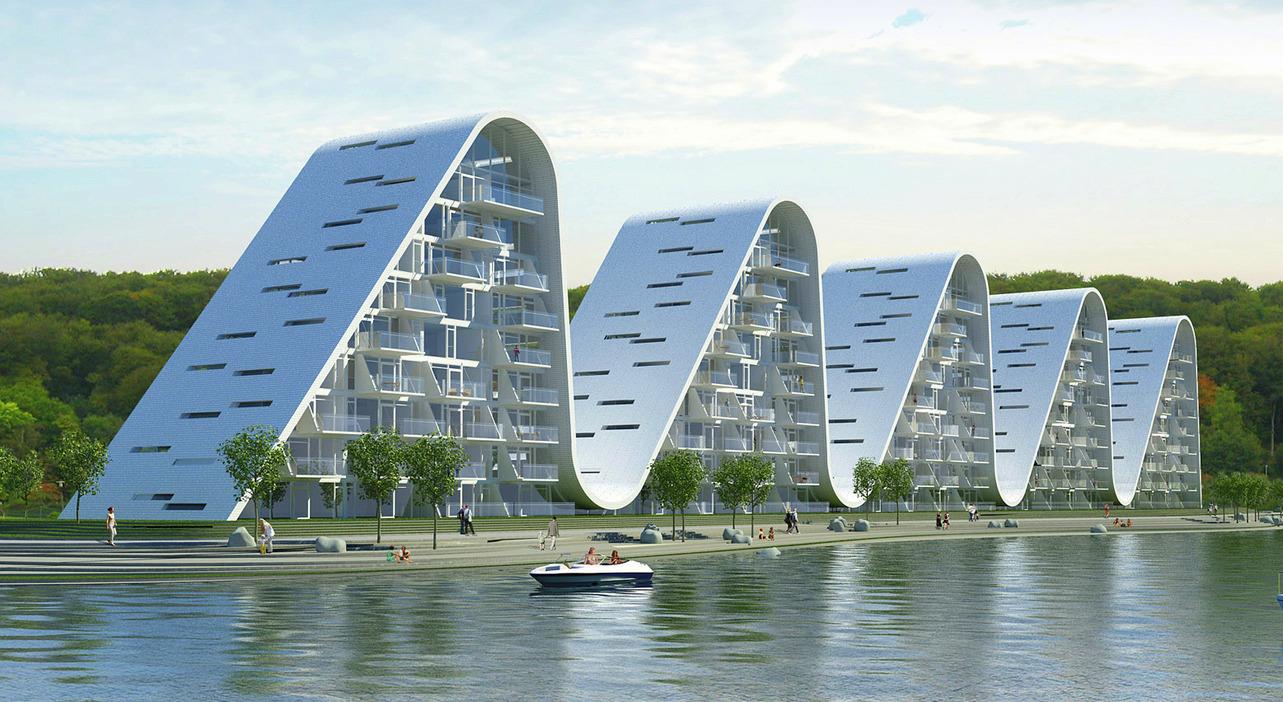
35 Hudson Yards, USA
35 Hudson Yards is a mixed-use skyscraper towering over Manhattan Island in New York City. It houses 143 world-class residences and the 14-storey, 212-room Equinox Hotel. The complex was the largest private development in the city's history since Rockefeller Centre was built in the 1930s. The project by architect David Child, which offers panoramic views of the Hudson River and the most prestigious island of the largest metropolis in the United States, took its final form in 2019. The chopped prismatic shape of the 300-metre-high building emphasises its lightness and the way it rises from the ground.
The interior uses only eco-friendly materials and furnishings, with a spa and ballroom on the top floor and a glass facade that allows natural light to flood in. A gym, yoga studio, meditation room and golf simulator are also available for residents' use. Hudson Yards has achieved LEED GOLD certification for its sustainability and energy efficiency.
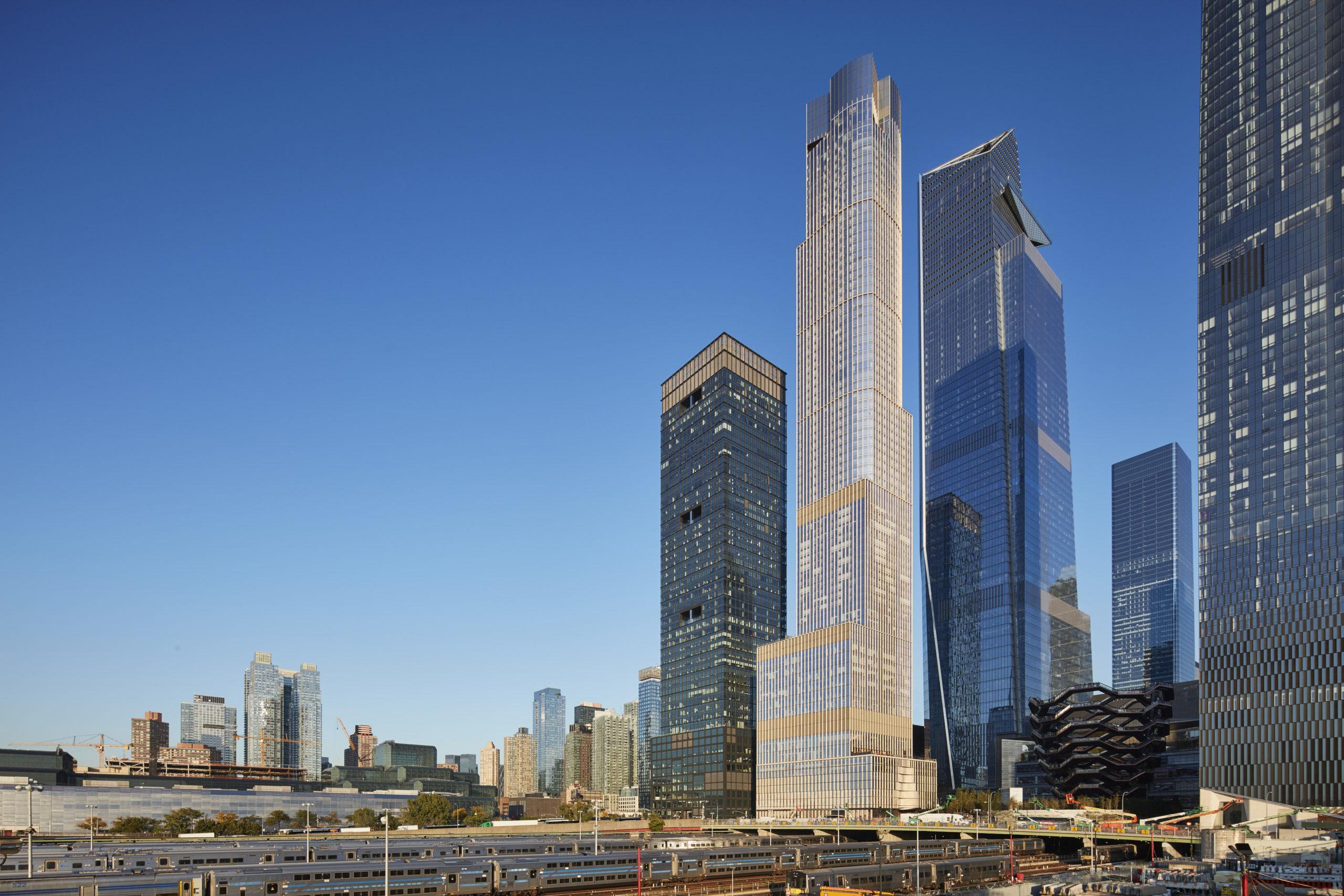
Limassol Del Mar, Limassol
The impressive Limassol Del Mar complex, whose profile is reminiscent of a sailing yacht, adorns the Limassol seafront with the elegance of its architecture. It consists of two buildings with a maximum height of 107 metres, whose façade line stretches along the coast for more than 170 metres. Built by the Zavos Group and Leptos Estates, well known in Cyprus, Del Mar has become a bright new star on the island's residential property scene with its flowing, sinuous facades and cascading slopes. The luxurious suites are named after the most famous gemstones and furnished by the renowned furniture studio Gianfranco Ferre Home. The suites feature a modern classic design in light colours and the latest home technology, while the spacious terraces offer magnificent panoramic views of the Mediterranean Sea. Limassol Del Mar offers its residents 5-star service and state-of-the-art facilities, including:
- Exclusive boutiques and luxury restaurants;
- Gymnasium and spa centre;
- Indoor and outdoor swimming pools;
- Landscaped park and children's playground;
- Personal concierges and underground parking.
Limassol Del Mar has set new standards for construction in Cyprus and has won the prestigious European Property Award as the best multi-storey residential project in Cyprus.
Properties for sale at Limassol Del Mar development
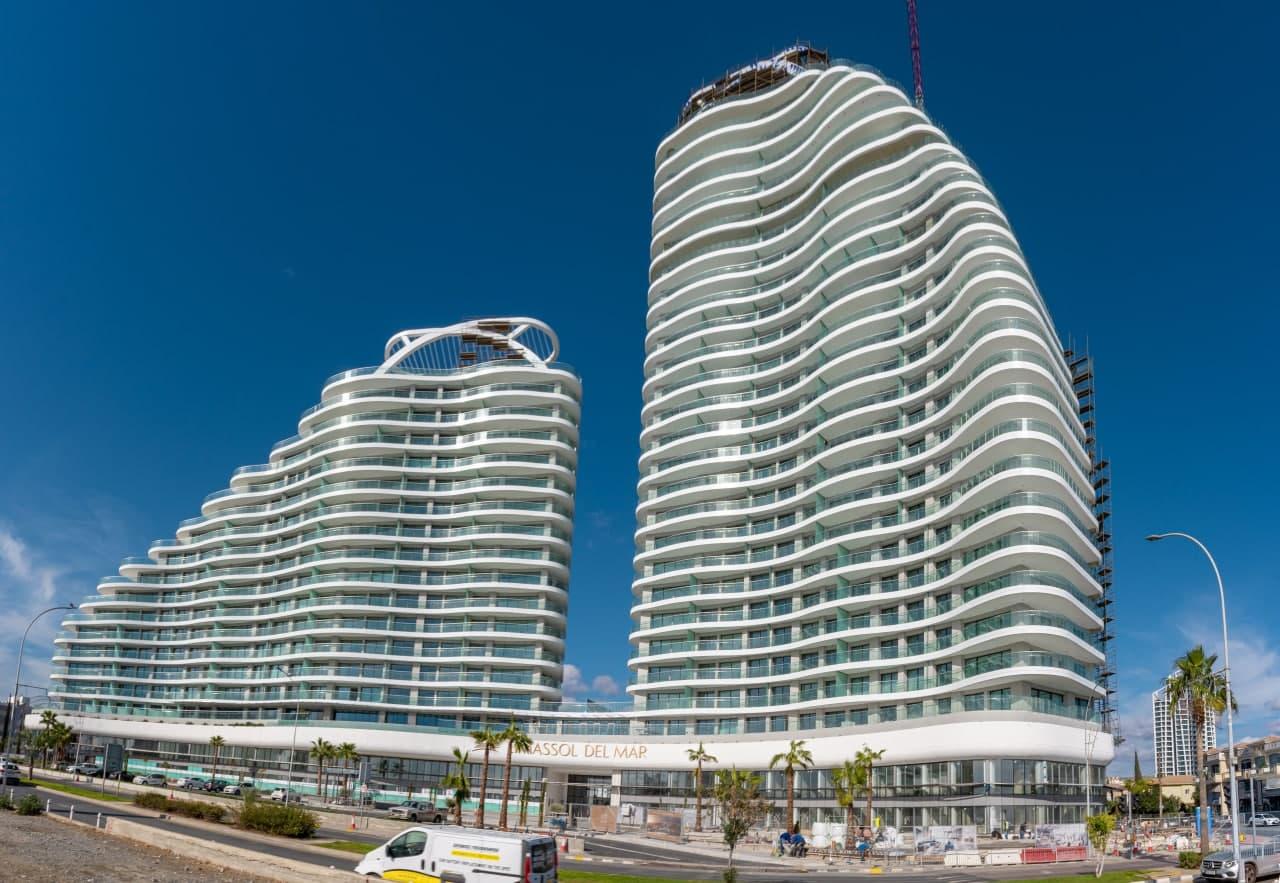
Habitat 67, Montreal
Habitat 67, a residential complex built on the banks of the St Lawrence River in Montreal, is considered one of the most original in the world. Designed by the famous Canadian-Israeli architect Moshe Safdie, it was built in 1967 for the world's largest exhibition at the time - Expo 67. The author of the project was only 23 years old at the time. With his work, Safdie demonstrated the combination of art and architecture, the realisation of the most daring ideas 'in stone'. The 12-storey Habitat 67 is made up of 354 concrete blocks, set at different angles to each other, and contains 146 cosy apartments. Each has its own terrace and a small ornamental garden on the roof of the neighbour below.
The project has been designed to maximise the amount of usable space in a small area. Safdie's idea of parkland around the buildings is still relevant today. The 'complex of the future', as Canadians called it, was built in the Brutalist style. Habitat was highly acclaimed by experts, as it made many people look at apartment buildings in a new way, transcending the canon of primitive urban 'cubism'. In 2009, the Quebec Ministry of Culture declared the complex a national heritage site.
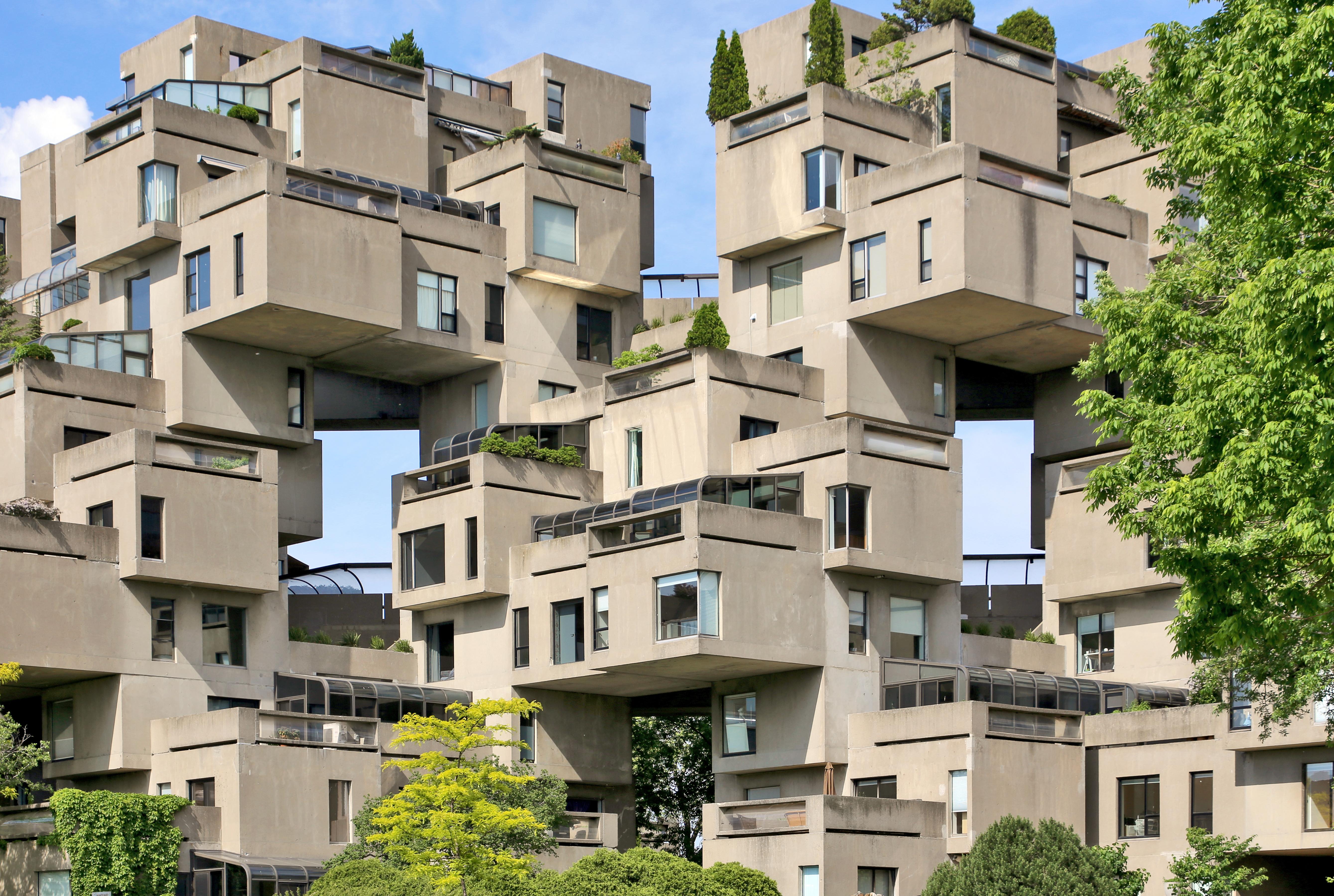
Federation Complex, Moscow, Russia
The Federation project is the flagship project in the high-rise centre of Moscow City and consists of two towers - West and East - built on a common stylobate. The latter is a 6-storey atrium containing office and commercial space. It should be noted that recently Moscow City has become an integral part of the Russian capital and its architectural appearance. The project was designed by the creative duo of architects Sergey Chobanom and Peter Schwager. The 95-storey Vostok Tower, which at 374 metres is the second tallest building in Europe after the Lakhta Centre in St. Petersburg, has residential apartments from the 69th floor, offering a breathtaking panorama of the city. The West Tower has 62 floors and rises to 242 metres, including the Nebo Wellness Club at 227 metres, with the highest swimming pool in Europe.
Fourteen thousand cubic metres of concrete were used in the construction of the complex's foundations, a Guinness Book of Records record. To ensure stability, every 25-30 floors of the skyscrapers are equipped with so-called outrigger floors made of high-strength steel. Specially for the Federation project, German and Chinese specialists have developed the latest glazing systems, in which the mirrored surface reflects the sun's rays, keeping the buildings at an optimum temperature. In addition, the skyscrapers use almost all of the world's most energy-efficient technologies. Each of the 67 lifts will travel at a speed of 8 metres per second, taking passengers to the 95th floor in less than a minute. The Federation project has won Russian and international awards for architecture and construction, including the European Property Awards and World's Best Property.

Interlace, Singapore
Interlace is one of the most extraordinary residential projects in the world, embodying a radical new approach to modern metropolitan living. The complex was designed by renowned German architect Ole Scheeren in 2013, and two years later won the Urban Habitat Award at the International Architecture Festival. Interlace also won the Singapore State Award for Green Architecture and Urban Design. According to the chief designer, 'dense urban housing does not have to be in an isolated skyscraper'.
The building covers an area of 8 hectares and consists of 31 six-storey modular blocks, each 70 metres long. The total height is 24 storeys and the number of apartments and penthouses is 1,040. The blocks are 'stacked' asymmetrically, with gaps that enhance the panoramic views from the site. At the disposal of the residents of the complex: fitness centre, theatre, cinema, 4 swimming pools, shopping centre, game pavilions and lotus pond with waterfall. There are also several barbecue areas, tennis courts, a bamboo garden and public roof terraces. In its time, Interlace has provided a wide range of quality housing in the metropolis, instilling a sense of complete comfort and harmony with the surrounding nature.
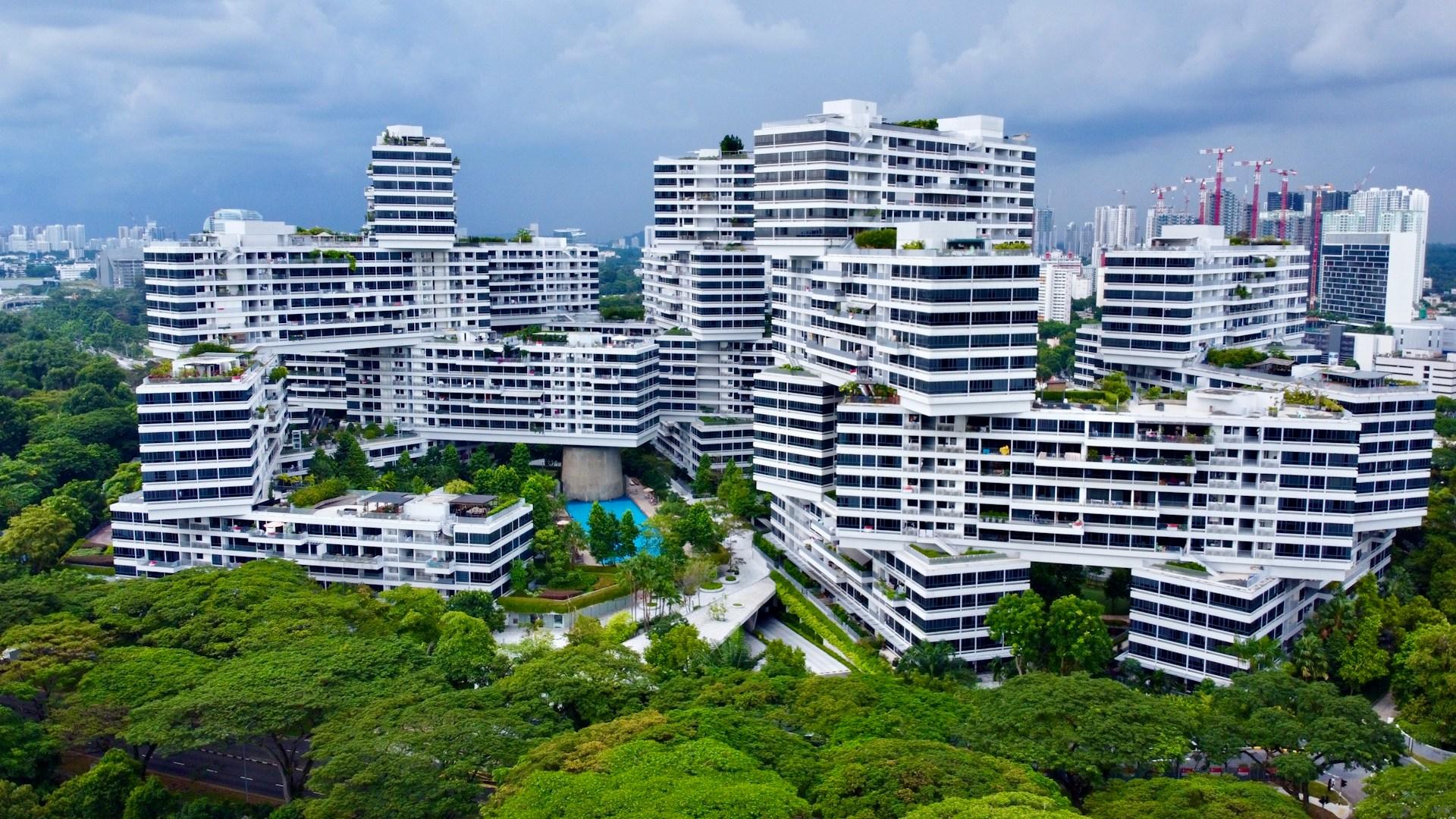
The Rotterdam, Rotterdam
The Rotterdam is a 44-storey mixed-use development built in 2013 on the banks of the River Meuse. It includes residential apartments, a hotel and office space. With a limited site, the developers could only build in one direction - upwards. The finished building is a work of art by OMA, a design firm with offices in Rotterdam, New York, Beijing and Hong Kong, and the architect Rem Koolhaas himself. The complex consists of three interconnected skyscrapers with a total width of 100 metres and a maximum height of 150 metres, called the West, Middle and East Towers. Each has an offset in the central sector in relation to its longitudinal axis.
The Rotterdam, whose facades are made entirely of tempered glass, is built on the principle of a vertical city, with separate zones for work, leisure and entertainment. The complex includes 240 apartments, 72,000 m2 of offices, a conference hall and a two-storey underground car park. In addition, the Nhow Rotterdam Hotel, located in one of the buildings, has 285 rooms. Each of the 44 floors has a service manager and the lower floors have a number of cafes, restaurants and shops. The Rotterdam is one of the tallest buildings in the Netherlands, but its residents find it beautiful, modern and attractive - as a landmark in Europe's largest port city should be.

The Arch, West Kowloon, Hong Kong
The Arch, a monumental 65-storey residential complex comprising 4 skyscrapers, is located in the West Kowloon district of Hong Kong. The names of the skyscrapers are all closely related to the celestial bodies, namely Sun Tower, Star Tower, Moon Tower and Sky Tower. It should be noted that this Chinese metropolis, which has a special economic status, has some of the highest property prices in the world and a very high density of buildings. The Kowloon district, which is lively and popular with expatriates, is located in the central part of the city and has excellent transport links and a large number of restaurants, shops and entertainment venues.
The towers are connected to each other at fairly high levels, giving the complex the shape of a giant arch. The most modern construction and energy-saving technologies have been used in the construction of the 230 metre high buildings. There are more than 1,000 apartments in the skyscrapers, an ornamental garden on the roof together with a social club. There is also a swimming pool, shopping centre, cinema and underground parking on the lower floors of the complex. The Arch is a luxury property by Hong Kong standards, with stunning views of the famous Victoria Harbour.
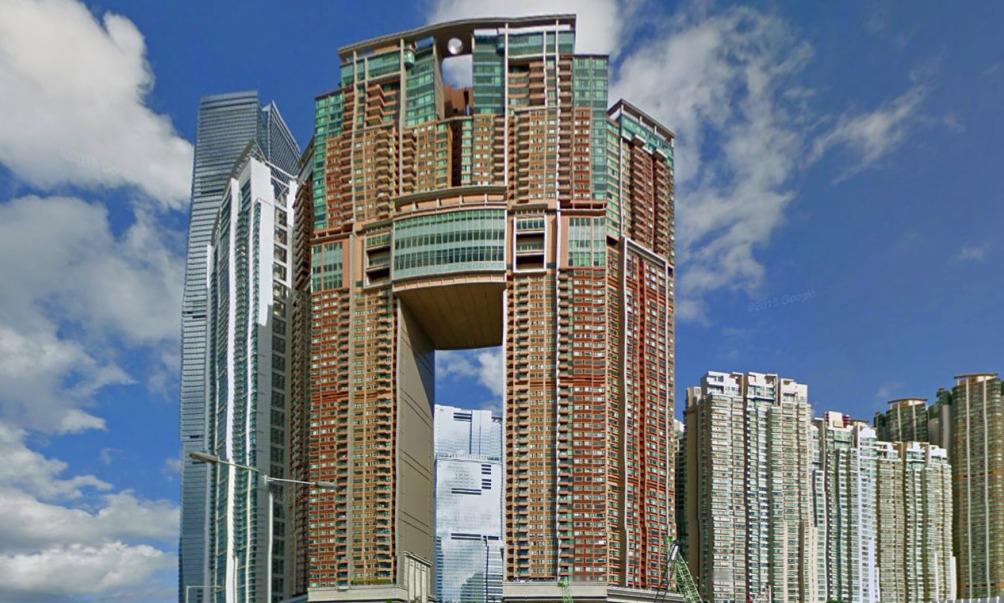
L'arbre blanc, France
The residential complex poetically named L'arbre blanc, or White Tree, in the southern French city of Montpellier, is an extraordinary project by Japanese architect Su Fujimoto and a group of French colleagues. The city itself, considered by the locals to be the capital of the Mediterranean, is situated on the coastal arc between Barcelona and Marseille. The main idea behind the construction of such a building, which later became a popular tourist attraction, was to enrich Montpellier's architectural heritage. The 17-storey complex, which is over 50 metres high and houses 113 apartments, is located in the heart of this sunny corner of the country.
It is easy to see that the team of architects, inspired by the rich natural environment, has designed a building whose main feature is the balconies that accentuate and highlight it. For seismic and wind resistance, the specialists carried out numerous volumetric tests using 3D models and a wind tunnel. The external elements of the building then posed the greatest challenge to the designers: given the design, the balconies had to be light and strong. In addition to the residential units, the complex houses an art gallery, a restaurant and a panoramic rooftop bar with spectacular sea views. Following its inauguration, L'arbre blanc was named the world's most beautiful residential building of 2019.
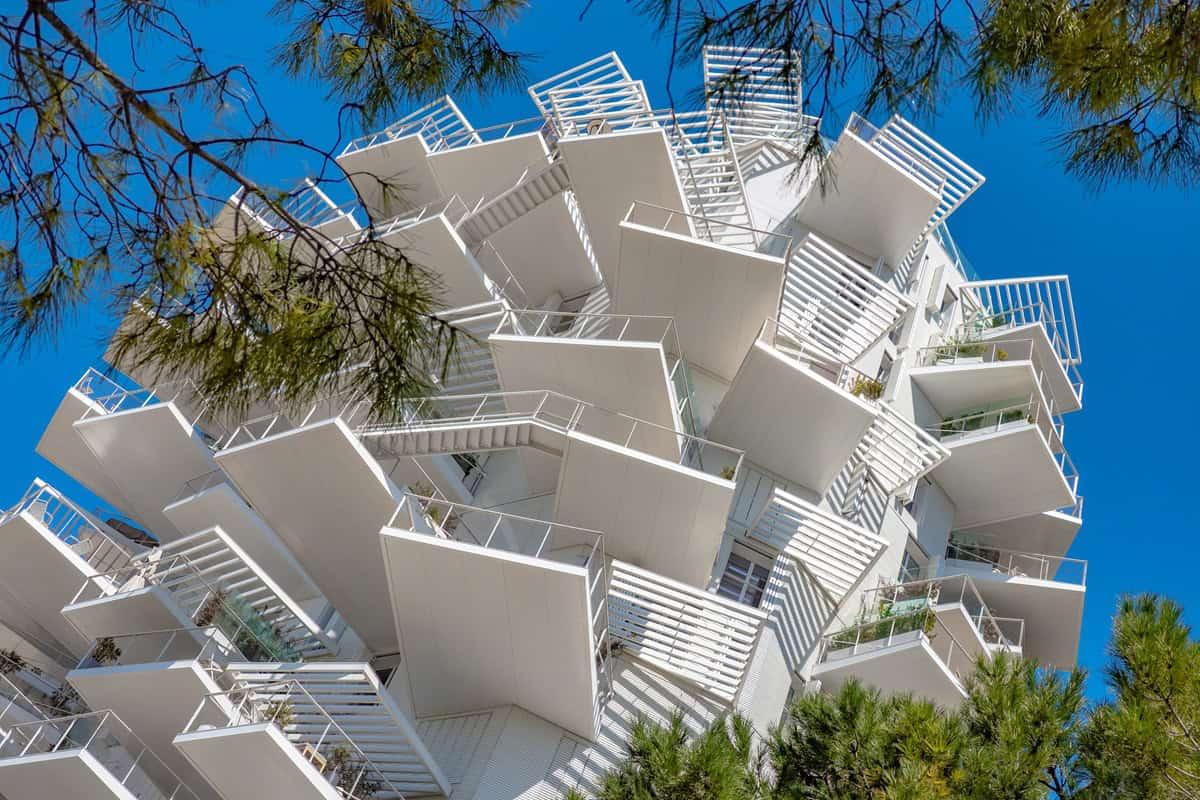
Read also:

